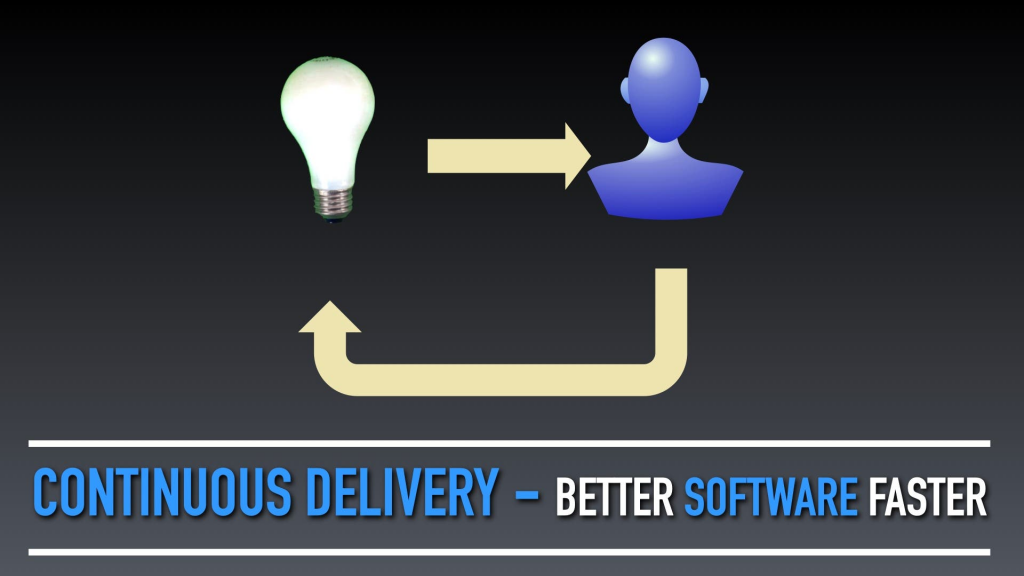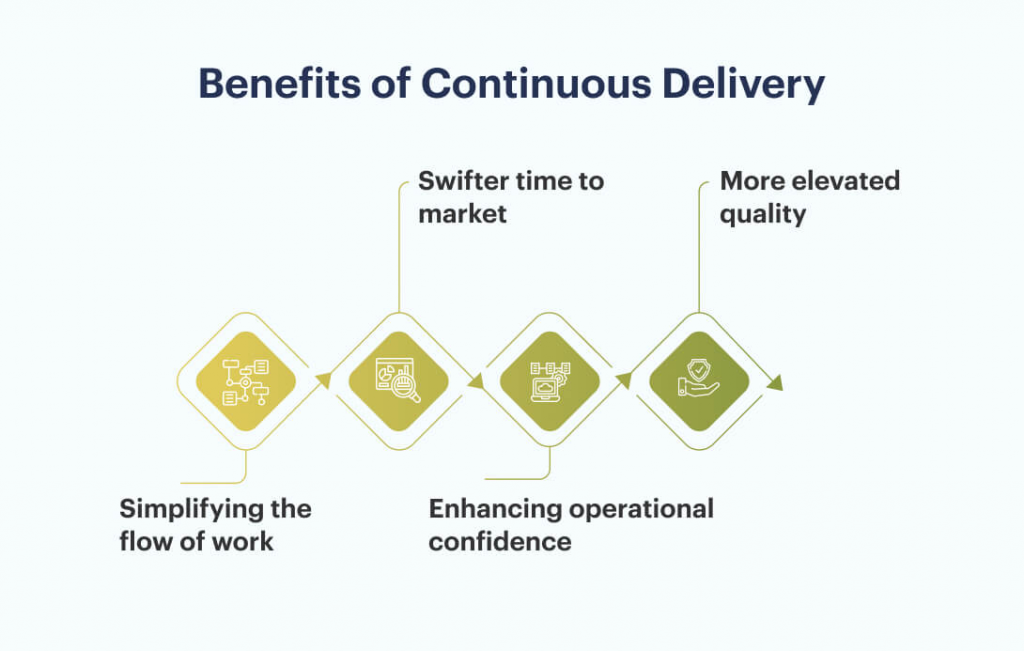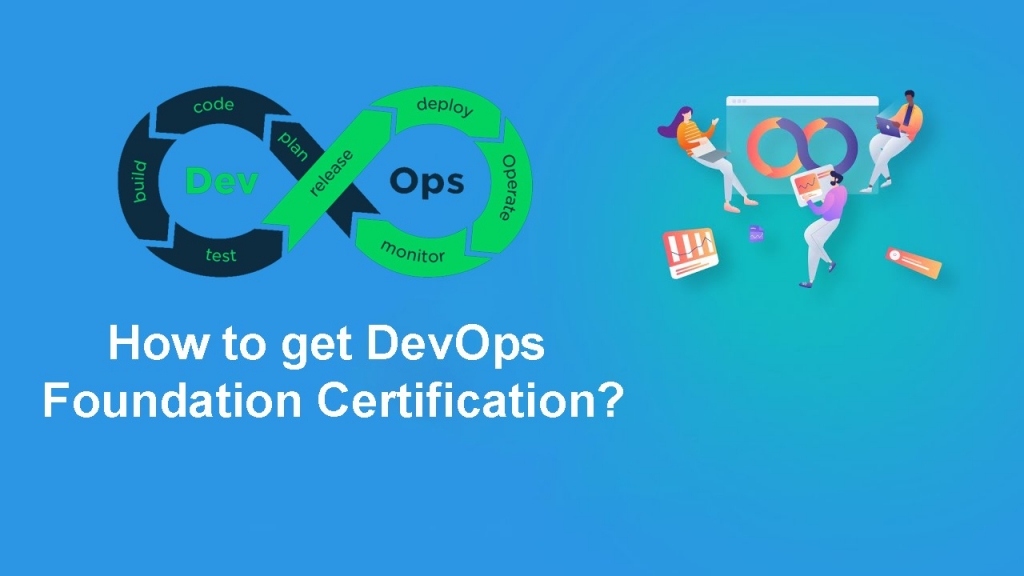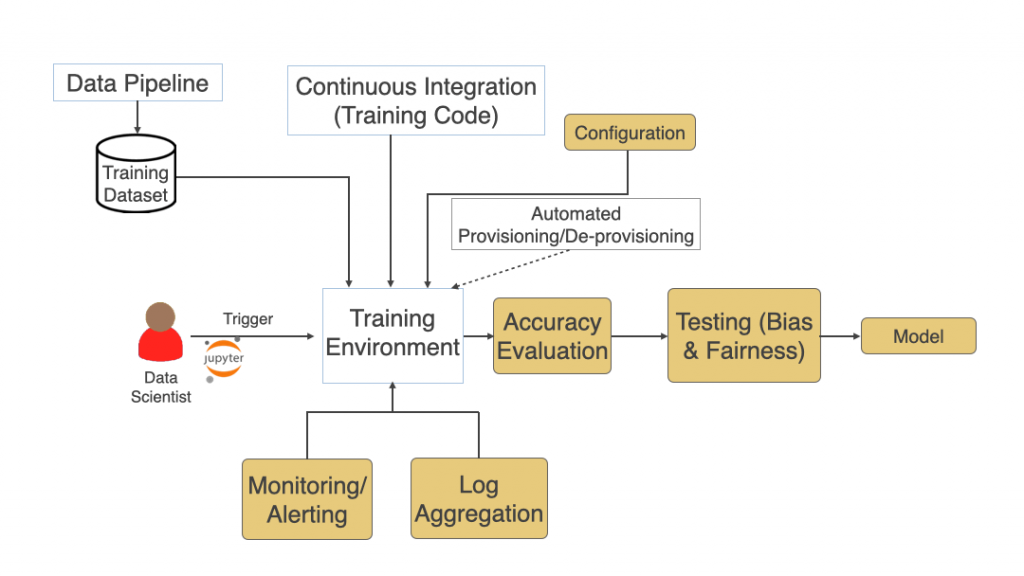
Continuous Delivery (CD) is a software development and deployment approach that focuses on automating and streamlining the software delivery process to enable frequent, reliable, and efficient releases of software updates, features, and improvements. The primary goal of Continuous Delivery is to reduce the time and effort required to move code changes from development through testing and into production, ultimately delivering value to users more rapidly and consistently.
Key principles and practices of Continuous Delivery include:
- Automated Builds: The process of compiling and building the application code is automated to ensure consistency and repeatability.
- Automated Testing: Comprehensive automated testing, including unit tests, integration tests, and acceptance tests, is integrated into the development pipeline. This helps grab issues early in the development process.
- Continuous Integration (CI): Developers regularly integrate their code changes into a shared repository, triggering automated builds and tests. This ensures that the codebase is always in a working state.
- Deployment Automation: The deployment process to staging and production environments is automated to reduce the risk of manual errors and ensure consistent deployments.
- Configuration Management: Infrastructure and application configuration is managed through code (Infrastructure as Code) to maintain consistency and enable automated provisioning and scaling.
- Environment Parity: Development, testing, and production environments are kept as similar as possible to minimize issues caused by differences between environments.
- Feature Flags: Feature flags or toggles allow for the controlled activation or deactivation of specific features in production, providing the flexibility to release features to a subset of users or quickly roll back changes if issues arise.
- Monitoring and Logging: Continuous Delivery includes comprehensive monitoring and logging to gain insights into application behavior, performance, and user interactions. This data informs decision-making and facilitates rapid issue detection and resolution.
- Feedback Loops: Continuous Delivery fosters feedback loops with stakeholders, including developers, testers, and end-users, to gather input and make improvements iteratively.
- Deployment Pipelines: Automated deployment pipelines orchestrate the flow of code changes from development through testing and into production, with stages for building, testing, and deploying.
Why We need Continous Delivery?
- Faster Time to Market: Continuous Delivery enables organizations to release new features, updates, and bug fixes rapidly. This speed is essential in competitive markets where being first to market can provide a significant advantage.
- Reduced Manual Effort: Automation reduces manual tasks, making the software delivery process more efficient and less error-prone. Developers and operations teams can focus on higher-value activities.
- Consistency: CD ensures that each code change undergoes the same rigorous testing and deployment process, leading to consistent and reliable releases.
- Risk Reduction: Frequent small releases reduce the risk of large, disruptive releases. If an issue arises, it is easier to identify and rectify in smaller increments.
- Improved Quality: Automated testing and continuous integration catch defects early in the development cycle, resulting in higher software quality and fewer production issues.
- Enhanced Collaboration: CD promotes collaboration among development, testing, and operations teams, breaking down silos and improving communication and coordination.
- User Satisfaction: Rapid, reliable updates and bug fixes lead to better user experiences and higher customer satisfaction.
- Innovation: Continuous Delivery encourages experimentation and innovation by enabling teams to quickly test and release new ideas, features, and improvements.
- Competitive Advantage: Organizations that can deliver software updates frequently and reliably gain a competitive edge by responding to market changes and user feedback more effectively.
- Resource Efficiency: CD optimizes resource usage by automating resource provisioning and scaling based on demand, resulting in cost savings.
- Compliance and Security: Automated testing and deployment processes can incorporate security checks and compliance testing to ensure that software updates meet security and regulatory requirements.
- Business Agility: CD allows organizations to respond rapidly to changing business requirements and market conditions, supporting business agility and adaptability.
Continuous Delivery is essential because it enables organizations to deliver software updates quickly, consistently, and with high quality. It enhances collaboration, reduces risk, improves user satisfaction, and supports innovation and competitiveness in today’s fast-paced and dynamic software development landscape.
What is the Advantage of Continous Delivery?

- Faster Time to Market: Continuous Delivery enables rapid deployment of software updates, features, and bug fixes, reducing time-to-market and allowing organizations to respond quickly to market demands and opportunities.
- Reduced Risk: Smaller, incremental releases reduce the risk of introducing large, disruptive changes that can lead to significant downtime or issues. Frequent testing and feedback catch problems early.
- Improved Software Quality: Automated testing and continuous integration in CD pipelines ensure that software updates meet high-quality standards, resulting in fewer bugs and production issues.
- Enhanced Collaboration: CD fosters collaboration among development, testing, and operations teams, breaking down silos and improving communication, coordination, and alignment of objectives.
- Higher User Satisfaction: Rapid and reliable updates and bug fixes lead to better user experiences and higher customer satisfaction, ultimately increasing user retention and loyalty.
- Resource Efficiency: CD optimizes resource usage by automating resource provisioning and scaling based on demand, leading to cost savings and efficient resource utilization.
- Innovation: CD encourages experimentation and innovation by allowing teams to quickly test and release new ideas, features, and improvements, fostering a culture of innovation.
- Competitive Advantage: Organizations that can deliver software updates frequently and reliably gain a competitive edge by responding to market changes and user feedback more effectively.
- Business Agility: CD enables organizations to adapt rapidly to changing business requirements and market conditions, supporting business agility and adaptability.
- Reduced Manual Effort: Automation in CD reduces manual tasks, making the software delivery process more efficient and less error-prone. Developers and operations teams can focus on higher-value activities.
- Consistency: CD ensures that each code change undergoes the same rigorous testing and deployment process, leading to consistent and reliable releases.
- Compliance and Security: CD pipelines can incorporate security checks and compliance testing to ensure that software updates meet security and regulatory requirements.
What is the feature of Continous Delivery?

- Automated Builds: The process of compiling and building the application code is automated to ensure consistency and repeatability.
- Automated Testing: Comprehensive automated testing, including unit tests, integration tests, and acceptance tests, is integrated into the development pipeline.
- Continuous Integration (CI): Developers regularly integrate their code changes into a shared repository, triggering automated builds and tests.
- Deployment Automation: The deployment process to staging and production environments is automated to reduce the risk of manual errors and ensure consistent deployments.
- Configuration Management: Infrastructure and application configuration is managed through code (Infrastructure as Code) to maintain consistency and enable automated provisioning and scaling.
- Environment Parity: Development, testing, and production environments are kept as similar as possible to minimize issues caused by differences between environments.
- Feature Flags: Feature flags or toggles allow for the controlled activation or deactivation of specific features in production.
- Monitoring and Logging: Comprehensive monitoring and logging are used to gain insights into application behavior, performance, and user interactions.
- Feedback Loops: CD fosters feedback loops with stakeholders to gather input and make improvements iteratively.
- Deployment Pipelines: Automated deployment pipelines orchestrate the flow of code changes from development through testing and into production, with stages for building, testing, and deploying.
- Change Management: SRE groups work closely with development groups to manage updates, changes, and deployments safely, using practices like canary releases and feature flags.
Continuous Delivery offers numerous advantages, including faster time to market, improved software quality, reduced risk, enhanced collaboration, and higher user satisfaction. Its key features include automated builds and testing, continuous integration, deployment automation, and monitoring, all of which contribute to efficient and reliable software delivery.
What is the Top 10 Use cases of Continous Delivery?
Continuous Delivery (CD) is a software engineering practice where code changes are automatically built, tested, and deployed to production in a frequent and reliable manner.
Here are the top 10 use cases of Continuous Delivery:
- Increased speed. CD can help to increase the speed of software delivery by automating the process of building, testing, and deploying code.
- Improved quality. CD can help to improve the quality of software by automating the testing process and by deploying code more frequently.
- Reduced costs. CD can help to reduce the costs of software delivery by automating the process and by reducing the need for manual intervention.
- Improved reliability. CD can help to improve the reliability of software by deploying code more frequently and by automating the testing process.
- Improved security. CD can help to improve the security of software by automating the testing process and by deploying code more frequently.
- Improved compliance. CD can help organizations to comply with regulations by automating the testing process and by deploying code more frequently.
- Improved customer satisfaction. CD can help to improve the customer satisfaction by delivering software more frequently and by fixing bugs more quickly.
- Improved employee satisfaction. CD can help to improve the employee satisfaction by automating the process and by reducing the stress of manual intervention.
- Improved innovation. CD can help organizations to innovate more effectively by automating the process and by freeing up engineers to focus on new features and projects.
- Increased visibility. CD can help organizations to increase visibility into the software delivery process by collecting and analyzing data. This can help them to recognize and solve issues early on.
How to Implement Continous Delivery?
The way to implement Continuous Delivery depends on the specific needs of the organization. However, some common steps include:
- Establish a CD team. CD should be implemented by a team that includes representatives from development, operations, and quality assurance.
- Define the goals of CD. The team should define the goals of CD, such as increasing speed, improving quality, or reducing costs.
- Identify the tools and technologies needed. The team should identify the tools and technologies needed to implement CD.
- Develop a plan for implementation. The team should develop a plan for implementing CD. This plan should include specific goals, timelines, and responsibilities.
- Implement the plan. The team should implement the plan for CD.
- Monitor and improve. The team should monitor the implementation of CD and make improvements as needed.
Continuous Delivery is a composite undertaking, but it can be a very prizing one. By implementing Continuous Delivery, organizations can improve the speed, quality, reliability, security, compliance, customer satisfaction, employee satisfaction, innovation, and visibility of their software delivery process.
Some additional considerations for implementing Continuous Delivery:
- You need to have a strong understanding of your organization’s needs.
- You need to have the support of the organization’s leadership.
- You need to be willing to invest in the right tools and technologies.
How to Get certified in Continous Delivery?
- DevOpsSchool.com
- scmGalaxy.com
- BestDevOps.com
- Cotocus.com

There are no Continuous Delivery (CD)-specific certification exams available yet. However, there are a number of certifications that can help you learn the fundamentals of CD, such as:
- Google Cloud Certified – Professional Cloud DevOps Engineer. This certification is offered by Google Cloud and covers the skills and knowledge needed to design, deploy, and manage cloud solutions.
- AWS Certified DevOps Engineer – Professional. This certification is offered by Amazon Web Services and covers the skills and knowledge needed to design, deploy, and operate cloud-based applications.
- Microsoft Certified Azure DevOps Engineer Expert. This certification is offered by Microsoft and covers the skills and knowledge needed to design, deploy, and operate cloud-based applications.
In addition to certifications, there are a number of other resources that can help you learn CD, such as:
- Books. There are a number of books available on CD. These resources can help you learn about the concepts and practices of CD.
- Articles. There are a number of articles available on CD. These resources can help you learn about the latest trends in CD.
- Online courses. There are a number of online courses available on CD. These courses can teach you the fundamentals of CD and help you prepare for the certification exam.
- Workshops. There are a number of workshops available on CD. These workshops can help you learn about the latest trends in CD and get hands-on experience with the tools and technologies.
- Conferences. There are a number of conferences that cover CD. These conferences can be a great way to learn about CD from experts and network with other CD professionals.
How to Learn Continous Delivery?

The best way to learn CD is to use a combination of these resources. Start by understanding the fundamentals of DevOps and cloud computing. Then, focus on learning about the specific CD practices and technologies that are relevant to your organization.
Some additional tips for learning CD:
- Get involved in the CD community. There is a growing community of CD professionals who are active on social media and in online forums. Get involved in this community to learn from others and stay up-to-date on the latest CD trends.
- Attend conferences and workshops. Attending conferences and workshops is a great way to learn about CD from experts.
- Get hands-on experience. The best way to learn CD is to get hands-on experience with it. You can do this by setting up a CD environment in the cloud or by working on a CD project at your job.
Continuous Delivery is a rapidly growing field, and there is a high demand for CD professionals. By learning CD, you can position yourself for a successful career in this field.
Email- contact@devopsschool.com

 Starting: 1st of Every Month
Starting: 1st of Every Month  +91 8409492687
+91 8409492687  Contact@DevOpsSchool.com
Contact@DevOpsSchool.com
